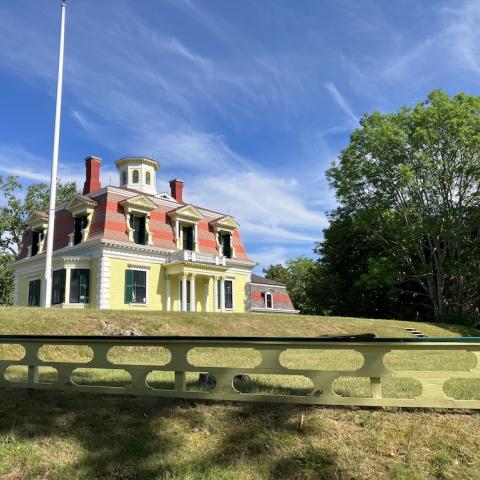
The Kohlberg House at Cape Cod National Seashore will be restored and managed by the Cape Cod Modern House Trust/NPS
Along with pristine beaches and miles of sand dunes, Cape Cod National Seashore also protects a dozen mid-20th century modern homes that are eligible for the National Register of Historic Places. One of those, the Kohlberg House, will be taken care of for the next decade by the Cape Cod Modern House Trust, which also will utilize the home for its scholar-in-residence programs and architectural studies.
The properties are associated with the massive increase in single-family seasonal housing on Cape Cod following World War II, a trend that added momentum to efforts to preserve a portion of the area as Cape Cod National Seashore. Many of the houses were designed, and in some cases lived in, by the leaders of the Modern Movement: Walter Gropius, Marcel Breuer, Eero Saarinen, and Serge Chermayeff. The Kohlberg House was built in 1960 by Luther Crowell. The house, located near Newcomb Hollow, possesses several characteristics of Modern Movement architecture, including its careful placement in the environment and its use of glass to achieve sweeping views.
The house has been vacant since around 2001, and exposed to the weather. But trust officials believe they can have it rehabilitated by June.
In 2012 the CCMHT entered into a 10-year lease for the historic Hatch and Weidlinger properties, and in 2009 CCMHT signed a 20-year lease for the historic Kugel/Gips House. Through a combination of town funds and donations of money, materials, and labor, CCMHT brought the deteriorating Kugel/Gips, Hatch, and Weidlinger properties into good condition early in each lease term.
“The Cape Cod Modern House Trust has a keen interest in Modern Movement architecture, and has been a leader in both research and education on the subject on the Outer Cape, regionally, and internationally,” said Cape Cod Superintendent Brian Carlstrom. “We’re fortunate to have a lessee with both the passion and the demonstrated ability to preserve and share these historic properties with the public.”


 Support Essential Coverage of Essential Places
Support Essential Coverage of Essential Places






